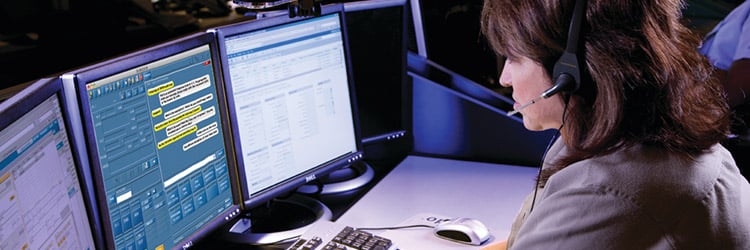The Evolution of 911 and PSAP Data
The information that Public Safety Answering Points (PSAPs) can receive today has come a long way since 911 service first debuted in 1968 (check out...
Someone in distress, unable to speak, dials 911 from their VoIP system at the office. The Public Safety Answering Point (PSAP) receives the call with the following E911 location information: 123 Main Street, Marketing department, port 16. The PSAP then transmits the location data to first responders. However, once on-site, the emergency team finds a campus that consists of numerous multi-story buildings. Where is the Marketing department, and where is the location of port 16? First responders spend seconds, if not minutes, trying to pinpoint the precise location of the caller.
PSAPs need to transmit location information in a format that first responders can easily identify and understand. When seconds count and emergency teams need to find a person requiring immediate assistance, they simply don’t have time to figure out the location of a port or department within an enterprise’s facility.
There’s a simple question that needs to be top of mind when setting up a Unified Communications (UC) network for 911 purposes. If someone from outside the organization receives the location data of a specific device, could they quickly find it?
In many cases, when enterprises map out their UC networks, they use static configuration pages (also known as station forms) to specify the location of voice systems within the company’s environment. The device’s jack number and department are often used to identify the device’s location. They also appear in certain location components in the company’s PBX or Active Directory.
This location information may be appropriate for IT purposes, leading enterprises to believe that the device locations provisioned in their company’s PBX or Active Directory are sufficient for PSAPs. However, first responders cannot easily identify E911 locations that consist of jack numbers or department names. What PSAPs need is an address to aid first responders. For instance, 123 Main Street, 4th floor, suite 401, station 10 describes a location that emergency teams can easily identify.
Emergency Response Locations (ERLs) allow enterprises to provision E911 location data that corresponds to an area within the enterprise – down to the building, floor, room or even workstation. The enterprise defines these ERLs, and then maps them to nearby network elements: switches, subnets, and/or wireless access points. When 911 is dialed from a VoIP or UC device, a tracking appliance like West's Emergency Gateway uses the network elements to which the VoIP or UC device is connected to cross-reference the device’s location (i.e. ERL), which is then delivered to the PSAP via a 911 call delivery service like West's Emergency Routing Service. This allows the enterprise to deliver that critical location detail to the PSAP.
There are few limitations on the number of ERLs that can be defined within an enterprise’s infrastructure. The number of ERLs that an enterprise requires depends on any relevant state E911 regulations, and the organization’s own risk mitigation policies. For example, an enterprise may determine that because of the state in which they operate, they must define an ERL for every floor. Another enterprise operating in a state without legislation may decide to define their ERLs down to the cubicle or office number in an attempt to mitigate liability risk in an emergency.
A cubicle or office number can make all the difference for first responders. Let’s take our emergency team who arrives on-site to assist a 911 caller who is unable to speak. The PSAP transmits the following location data: 123 Main Street, Building K, 4th floor. The emergency response team finds the correct building and floor. However, they waste valuable time going from closed offices to cubicles, looking for the distressed caller. If the tracked device had a provisioned office or cubicle number included as part of the location (e.g. 123 Main Street, Building K, 4th floor, office 403), first responders could methodically navigate the floor to find the right location, spending less time searching and more time assisting the 911 caller.
Remember, the key to a clear E911 location is an address – along with additional data – that is easily understandable by someone outside of your organization. Take the time to perform an audit to determine whether your enterprise’s location data would make sense to someone who isn’t familiar with your premises. You could help your enterprise avoid potential liability risks, and help your users get the assistance they need as quickly as possible, should they ever need to dial 911.

The information that Public Safety Answering Points (PSAPs) can receive today has come a long way since 911 service first debuted in 1968 (check out...

Modern enterprises face obstacles in ensuring reliable E911 support due to their complexity and a few key characteristics. They often operate...

Last updated: March 13, 2023 Migrating to Microsoft Teams? Consider Dynamic E911. If your enterprise is migrating to Microsoft Teams, you can start...

Key Highlights from our E911 FAQ Jose Alvarado, E911 sales engineer, lends his expertise to this helpful Q&A where we tackle the top...